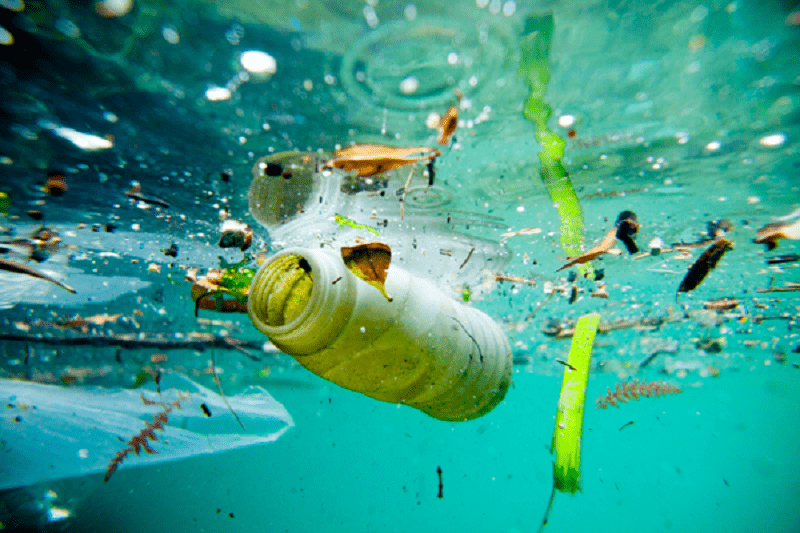
6 consequences of water pollution
Water is one of the most important natural resources of all. In fact, water depends not only on life in all its forms on our planet but also a large part of human activity, from agriculture and industry to something as simple as opening the tap at home and being able to enjoy the water for Drink or wash. Therefore, water pollution is one of the major problems we will have to face in the coming years, since it is a much scarcer resource than it may seem, although we are more and more human beings on the planet and the demand grows. If you want to know 6 consequences of water pollution, keep reading.
6 consequences of water pollution
One of the issues we have to be clear about when dealing with water and its importance as a natural resource is that, although there is apparently a lot, for the most part, it is not useful for our daily use. In this sense, it is essential to distinguish between salt water and fresh water. The salt is that which has salt dissolved in it, and the sweet one that lacks this salt.
The problem, being the importance of water as a natural resource, is that only a little less than 3% of the water on our planet is sweet. In addition, this 3% includes frozen water, both in the form of snow and ice in mountains as well as in the entire Antarctic and the Arctic Ocean. In this way, the fundamental problem when obtaining water is not so much the obtaining of water, but the obtaining of fresh and useful water for human activities and for the good state of terrestrial ecosystems.
As we can imagine, water pollution is one of the most pressing problems that we face today. Some of the most direct problems that cause its contamination are the following:
Lack of drinking water
This is the most urgent problem in many parts of the world and, in the future, it will be more common than we would like. Water pollution leads to the destruction of many sources of fresh water from which drinking water is obtained. For example, aquifers. Its contamination entails the loss of these freshwater sources and, consequently, the creation of areas that do not have access to potable water despite the presence of water in the subsoil.
Increase in economic activities
Another consequence of water pollution is the increase in the cost of many economic activities, especially those related to agriculture and livestock, but also those related to the industry, which uses huge amounts of water for the operation and cleaning your machinery. As there are greater amounts of contaminated water on the planet, the use of fresh drinking water becomes more expensive. Also, all those economic activities that depend on its use.
Non-infectious diseases
Another consequence of water contamination is the appearance of certain non-infectious diseases in people and animals because of the presence of contaminants. A good example is found in the presence of metals such as mercury, lead, aluminum and cadmium, which pass from the environment to water and, finally, to the oceans. These metals pass to the food chain and, finally, they reach the human being, where they are associated with degenerative diseases and the appearance of certain types of tumors.
Infectious diseases
In the same way that water is a means to distribute heavy metals, bacteria and other germs spread easily in this medium when the water is not treated properly. The direct consequence is the appearance of outbreaks of infectious diseases in specific populations that consume water contaminated by the specific infectious agent.
Destruction of ecosystems and desertification
Another problem with water pollution is that, by contaminating water, soils are also contaminated. The direct consequence is the destruction of all forms of life dependent or associated with contaminated soils, which end up becoming deserts because they can not harbor life forms in them.
Increase in migratory flows
Another consequence of water pollution is the increase in migratory flows. These migratory flows are the consequence of the destruction and desertification of soils. By destroying an ecosystem and the soils associated with it, areas are created where agriculture is simply impossible. As a result, the local economy ends up giving way, forcing people in this area to migrate to other areas and, in this way, polluted areas are created completely depopulated as a result of the initial contamination of water.
Water pollution: Definition and types
Another problem with water pollution is that it can be contaminated in many ways. Although the classifications may vary according to the sources consulted, the main types of pollution that tend to occur more frequently are the following:
1. Physical water pollution
With this type of contamination, we refer to water contamination that is carried out from large-sized elements. For example plastics or toilet wipes.
This type of pollution is very harmful, since, in addition, they deteriorate considerably the landscape and the biodiversity of the ecosystems where it takes place.
2. Chemical water pollution
Contrary to physical contamination, this contamination is invisible because it is caused by microscopic particles of pollutants that deteriorate the good state of the water.
Here we can find from the presence of heavy metals, such as mercury or lead, to microplastics, oils, chemical molecules of synthetic manufacture, etc.
3. Biological contamination of water
This type of contamination is characterized by the presence of infectious agents potentially harmful to human and animal health. It usually occurs in population centers as a result of gray water (waste water and sewage), as well as in livestock industries and in places where water is not treated adequately for human consumption.
It is water contaminated by bacteria that can cause, from simple gastroenteritis to diseases such as cholera or dengue.
4. Radioactive water contamination
It is pollution more difficult to find in the water. However, in places where nuclear accidents have occurred, it has a particularly important presence.
An example of this type of contamination is found in the Pacific Ocean, especially after the accident at the Fukushima Japanese nuclear power plant.





